Weather to expect in Australia this summer
Australia’s meteorological summer officially starts today, December 1. It’s a season that typically produces searing heatwaves, scorching bushfires, severe thunderstorms and tropical cyclones. But what type of weather can Australia expect to see this summer?
Australia has entered summer off the back of its wettest springs on record, largely as a result of three dominant climate drivers:
- An active La Niña in the Pacific Ocean to the northeast of Australia
- A negative Indian Ocean Dipole (IOD) to the northwest of Australia
- A predominantly positive Southern Annular Mode (SAM) to the south of Australia
All three of these climate drivers act to increase the likelihood of rainfall, cloud cover and flooding in Australia. You can read more about La Niña, the IOD and SAM here, here and here.
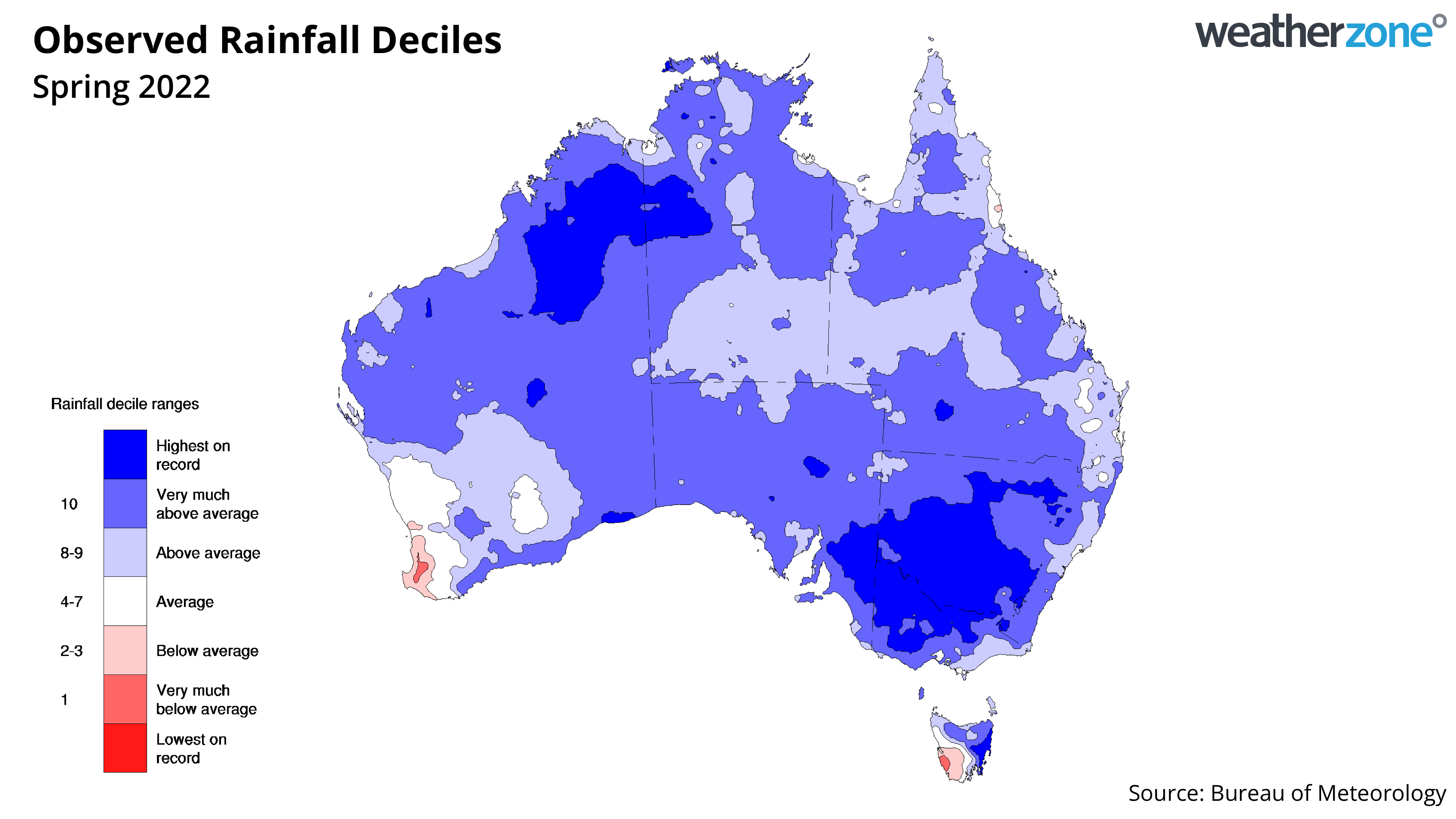
Image: Observed rainfall deciles during spring 2022.
In response to this prolific spring rain, large areas of eastern and southeastern Australia are still being affected by flooding as we enter summer. Vast swathes of central and eastern Australia are also teeming with above-average vegetation growth, which is expected to become fuel for bushfires as we venture into the hot summer months ahead.
Australia’s climate drivers this summer
Most seasonal forecast models suggest that La Niña should persist until the end of 2022 before breaking down early next year, most likely ending in January or February.
The Indian Ocean Dipole (IOD) has been in a neutral state for the past four consecutive weeks, with the 2022 negative IOD event most likely now over. This means the IOD should have no influence on Australia’s weather this summer.
The Southern Annular Mode (SAM) is also expected to remain in a predominantly positive phase during the first half of summer. However, as La Niña breaks down early next year, more neutral and negative phases of the SAM will become more likely.
In summary, Australia will most likely remain under the influence of La Niña and a positive SAM during the first month or two of summer. These two climate drivers should then wane over the second half of the season.
So, what does this all mean for Australia's weather over the next three months?
Rainfall and thunderstorms
Rainfall
Above average rain is forecast across parts of eastern and southeastern Australia this summer. There will also be an increased risk of heavy rain events and flooding over the country’s eastern states, especially in areas that already saturated ground from recent rainfall.
The likelihood that this summer’s rainfall will end up being in the top 20 percent of historical records is roughly double that of a normal summer for large areas of Qld, NSW, Vic, Tas and SA.
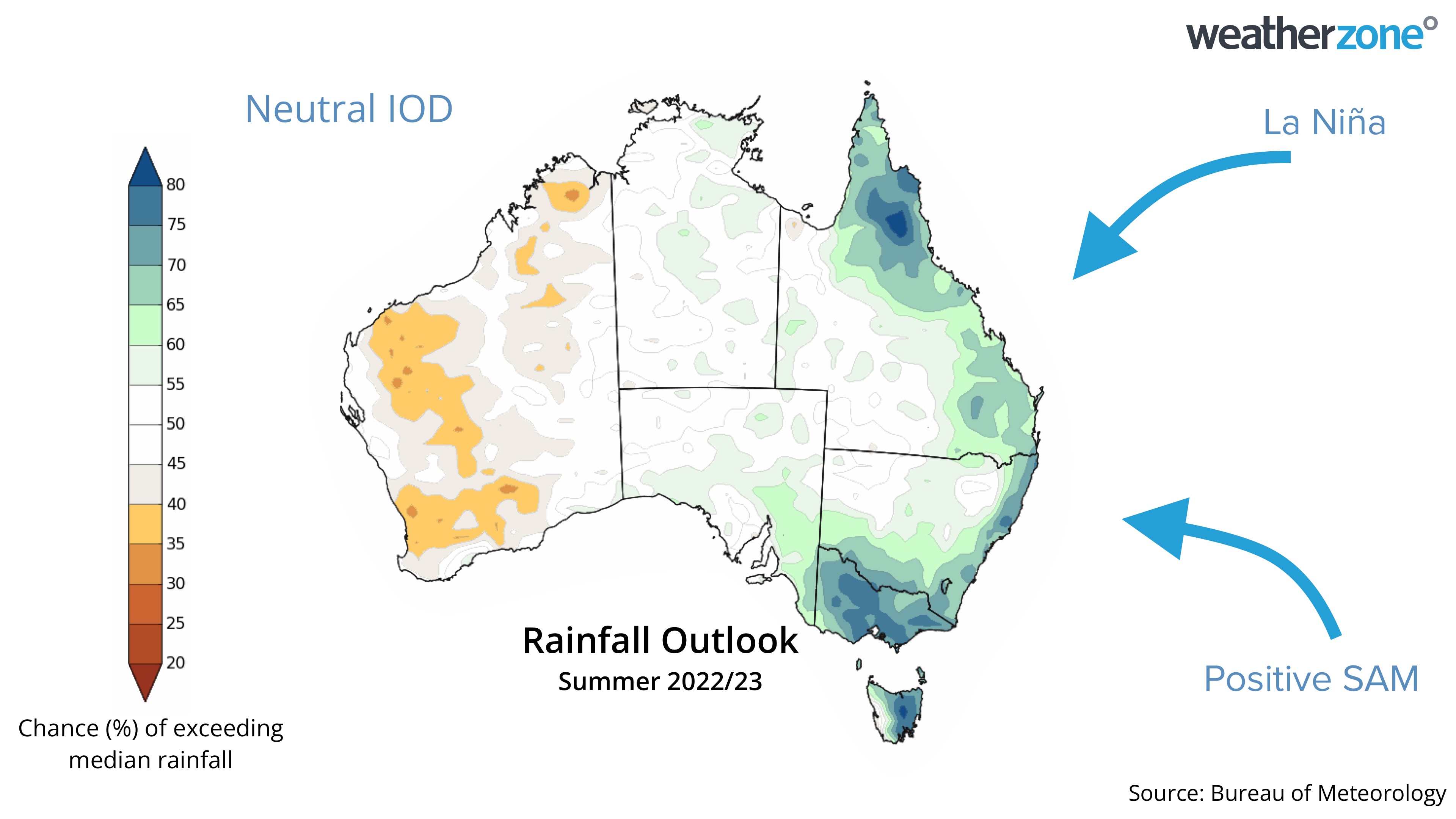
Image: Rainfall outlook for summer 2022/23.
In contrast to eastern Australia, near to below average rain is expected over the western half of Australia in the wake of the negative IOD that dominated during spring.
Thunderstorms
Thunderstorms happen over large areas of Australia every summer because the three key ingredients required for storm development are available in abundance:
- Sufficient moisture in the lower levels of the atmosphere
- Instability in the atmosphere
- A trigger to initiate the storm
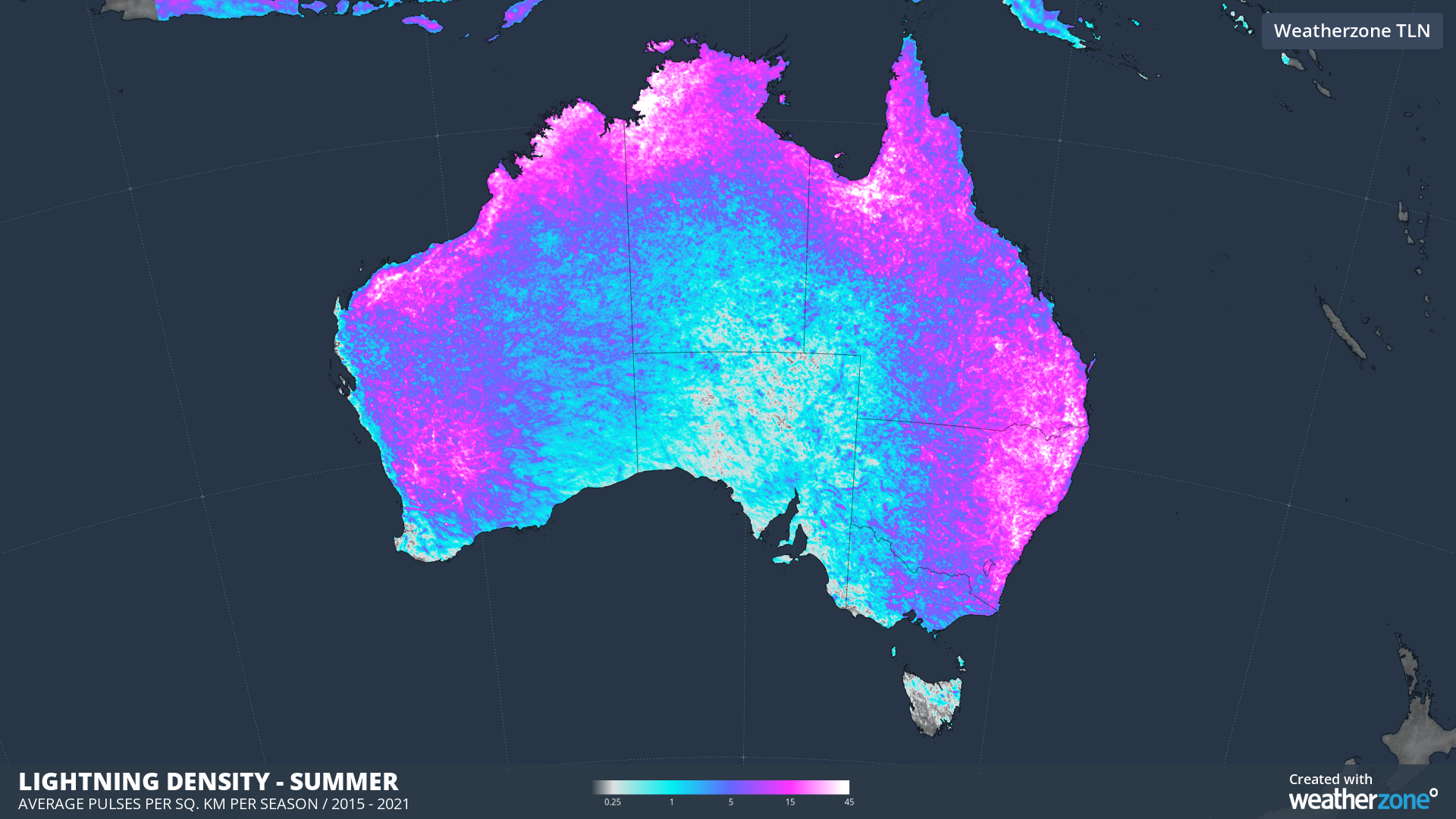
Image: Mean lightning density in summer based on all lightning pulses detected by Weatherzone’s Total Lightning Network between 2015 and 2021.
During the first half of summer, La Nina and positive phases of SAM should increase the amount of moisture available to fuel storms across eastern and northern Australia. Under La Niña, storm activity also shifts a bit further west, becoming less likely near the coast in eastern Australia and more likely over the country’s central and eastern Interior.
However, phases of positive SAM and La Niña can also reduce the instability and triggers required for storm development, particularly in southern and eastern Australia.
With these influences counteracting each other, expect to see near-normal thunderstorm activity in southern and eastern Australia, with a shift towards more inland storms over eastern Australia. Normal to above normal thunderstorm activity is anticipated across northern Australia.
As with every summer, which is Australia’s stormiest season, severe storms are likely to produce large hail, damaging wind and heavy rain on a regular basis in multiple states over the coming months.
If La Niña breaks down as expected early next year, storms will likely become more frequent and intense over Australia’s eastern states. This is because neutral ENSO conditions provide the most favourable setup for thunderstorm activity in Australia and there will be remanent moisture left near Australia.
Temperatures and heatwaves
The ongoing influence of La Niña and a positive SAM will decrease the likelihood of above-average temperatures and extremely hot days in Australia during the first half of summer. However, extremely hot days and above-average temperatures should become more likely across most of the country during the second half of summer.
Overnight temperatures are expected to be near to above average for most of the country this summer.
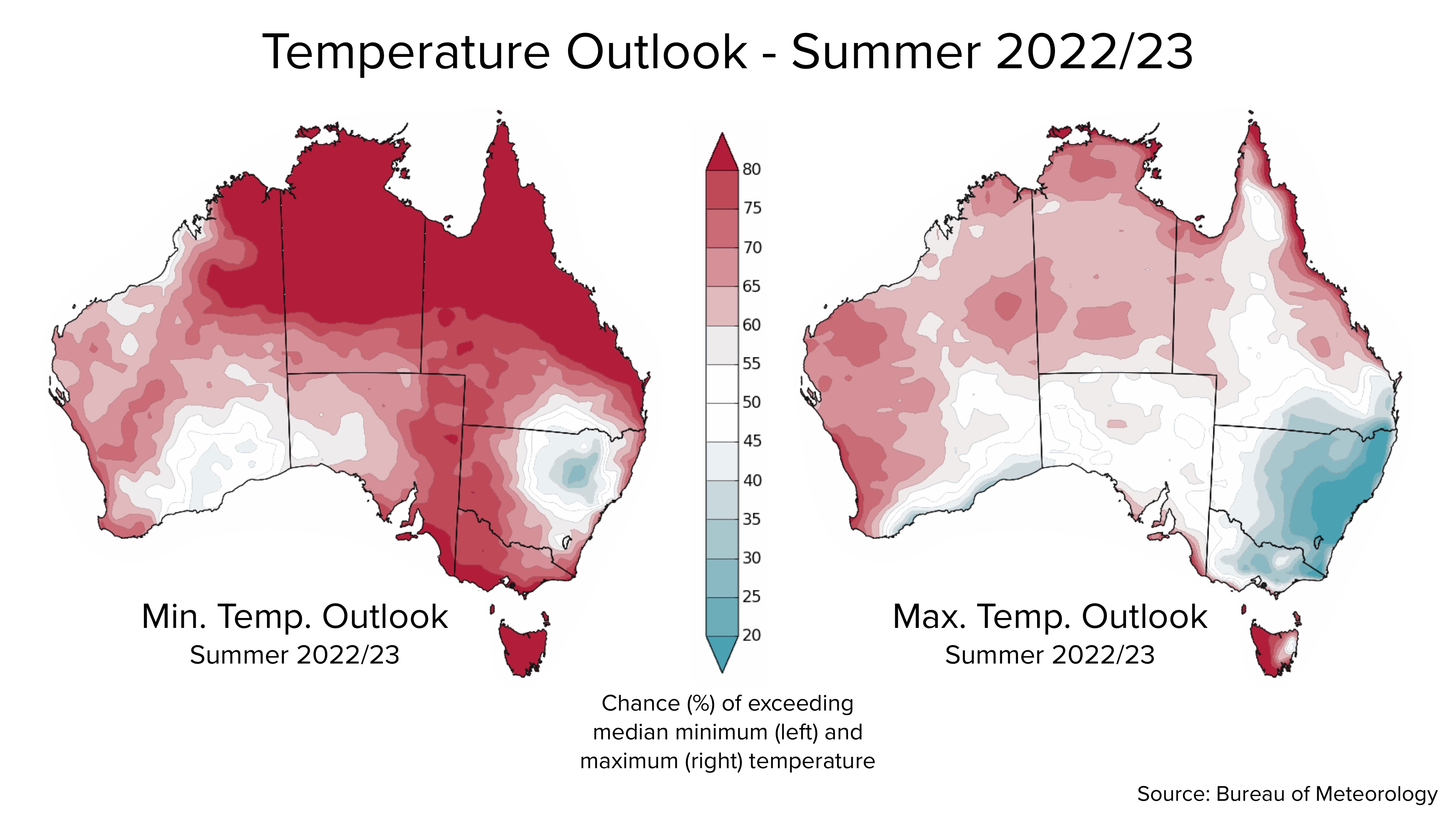
Tropical Cyclones
Australia’s tropical cyclone season runs from November until April and the first coastal crossing in Australia typically occurs in early January. On average, there are usually 9 to 10 tropical cyclones named in Australia’s area of responsibility each season.
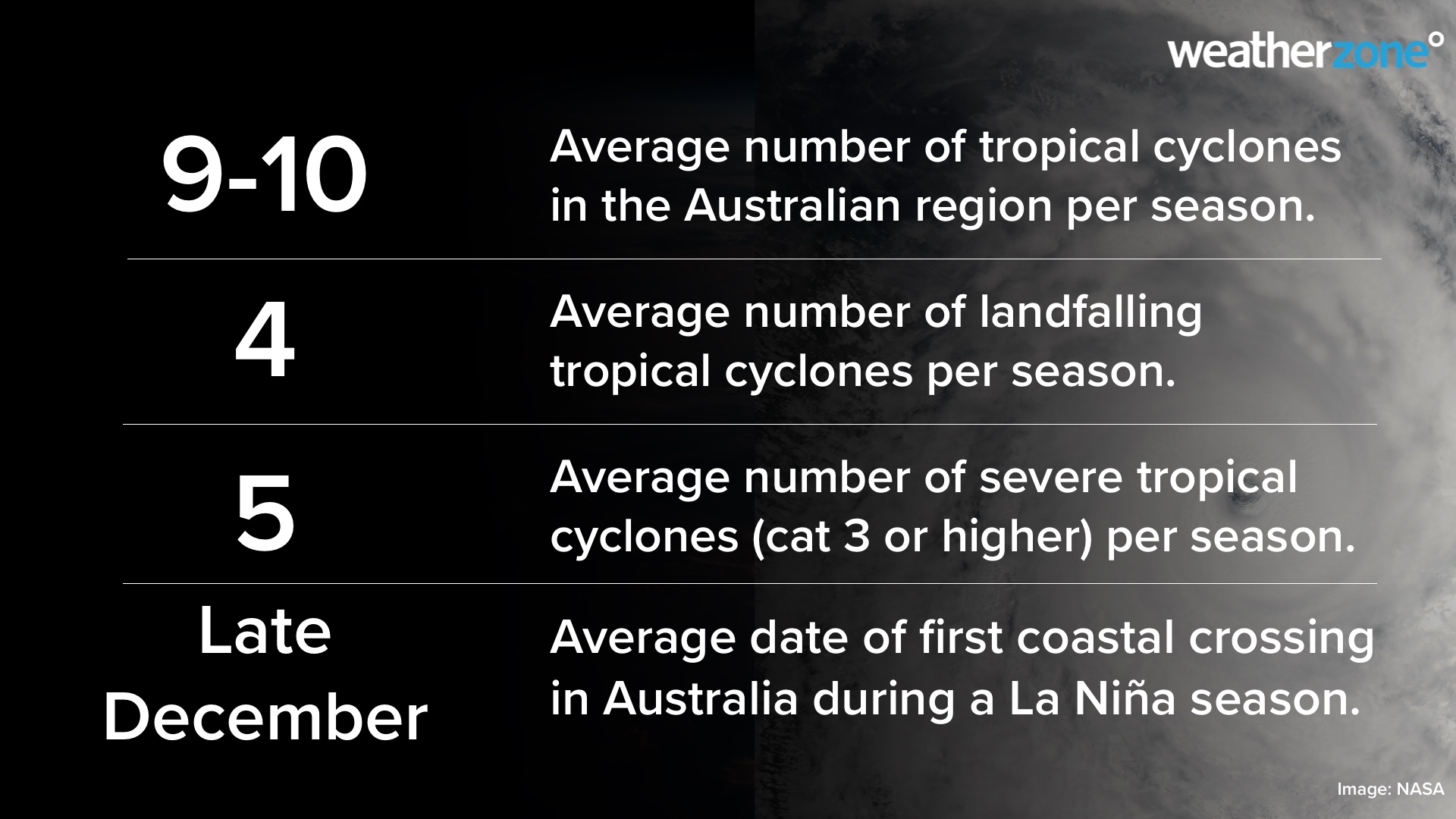
Abnormally warm ocean temperatures near northern Australia will increase the potential for tropical cyclone and deep tropical low activity this summer. Tropical Cyclone activity could also begin earlier than usual thanks to La Niña causing warm water to linger near northern Australia.
During La Niña years, the first tropical cyclone coastal crossing typically occurs around mid-to-late December, which is about half a month earlier than usual.
Bushfires
The combination of rainfall, abundant groundwater and live green vegetation will reduce the risk of bushfires across large areas of Australia in the opening weeks of summer. However, as hotter and drier weather arrives early in 2023, a lot of this vegetation will dry out and increase fuel loads for fires.
The red areas on the map below show where above-normal fire potential is anticipated this summer.
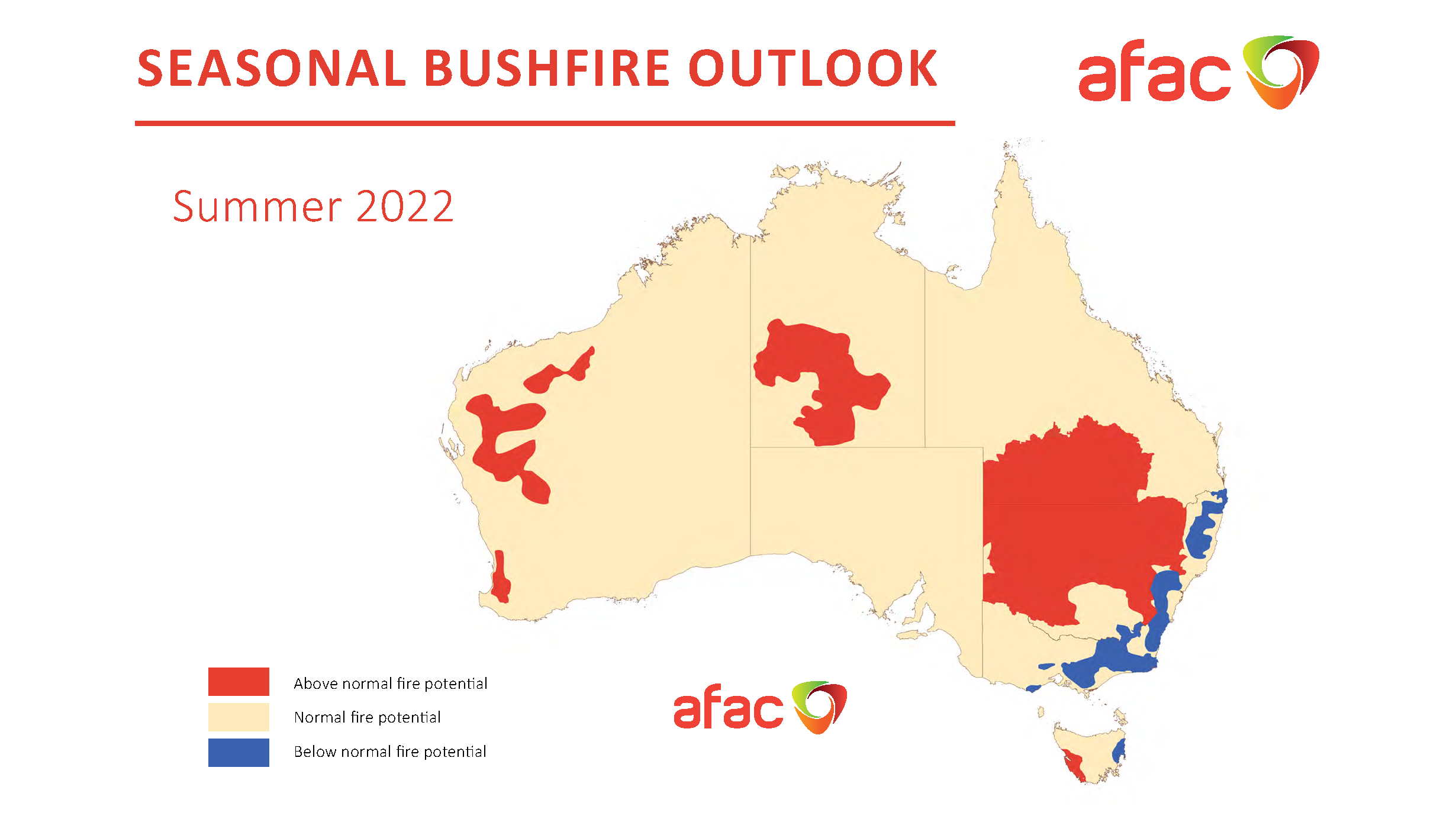
Image: Australia's Seasonal Bushfire Outlook for summer 2022/23. Source: AFAC
You can read more about the Seasonal Bushfire Outlook for summer 2022/23 here.
Northern wet season
Rain becomes more frequent and heavier over northern Australia with the arrival of the monsoon. On average, the monsoon onset occurs around December 28 in Darwin. In La Niña years, the onset usually happens a bit earlier, around mid-December.
This summer, wetter-than-average conditions are predicted for northern QLD, while tropical areas of the NT and WA have roughly equal chances of above and below average rain.